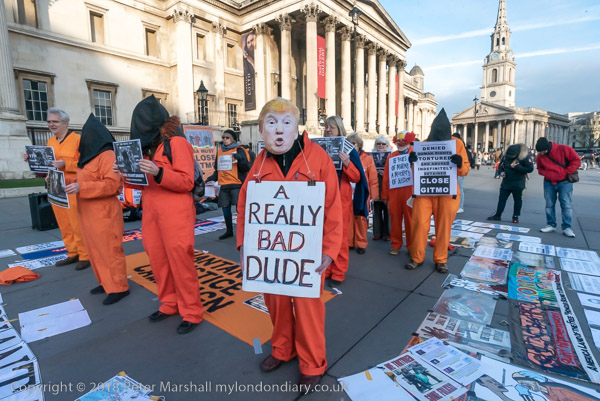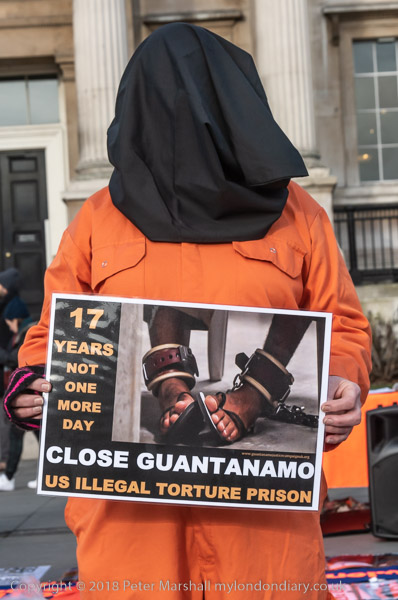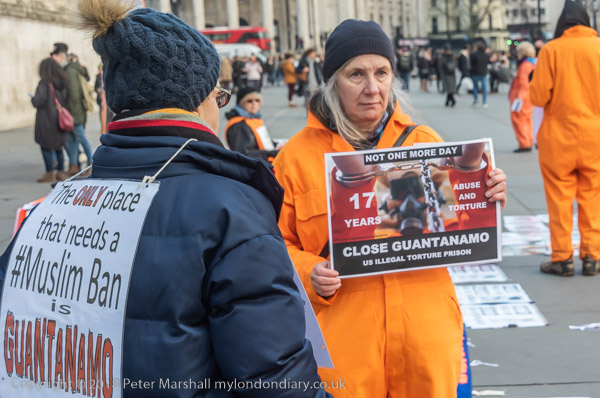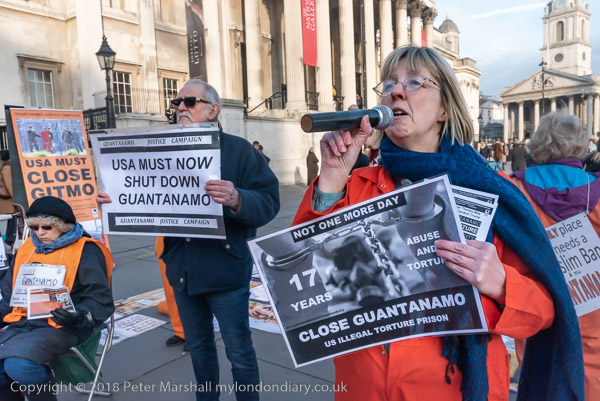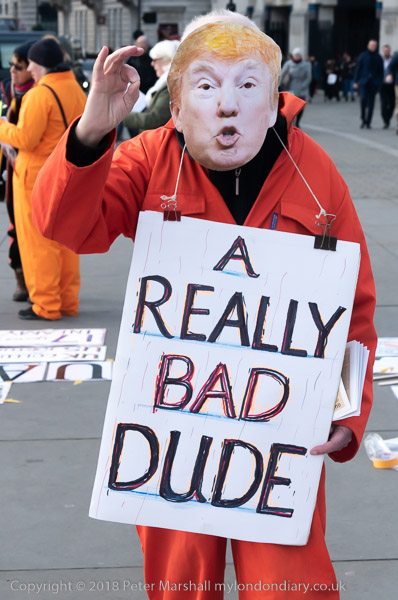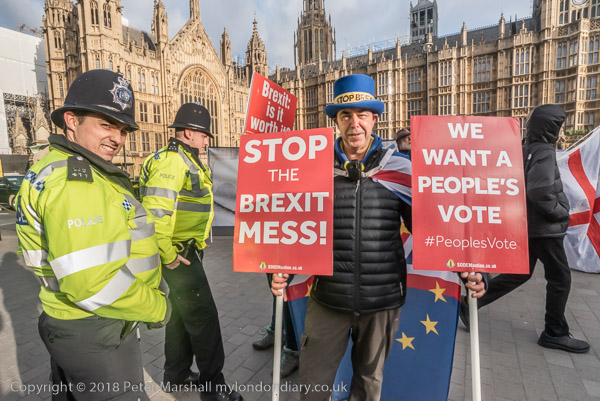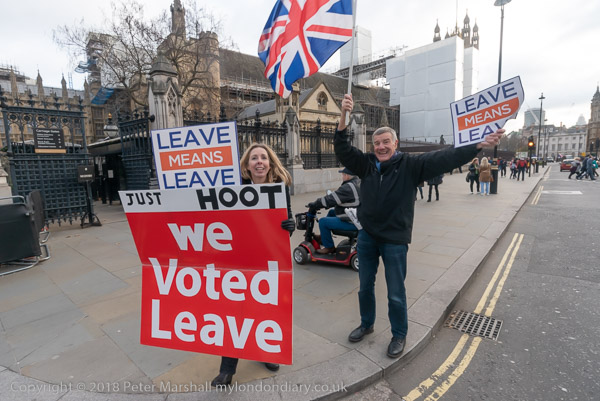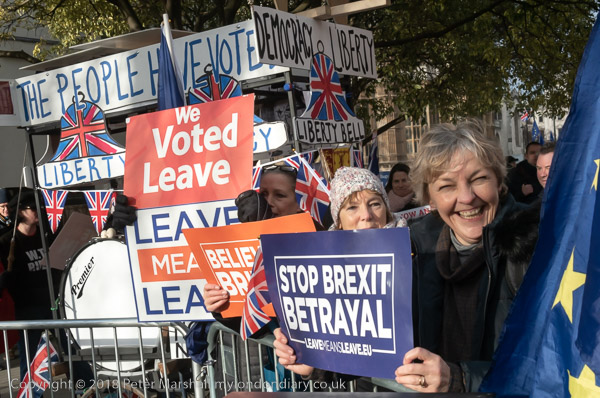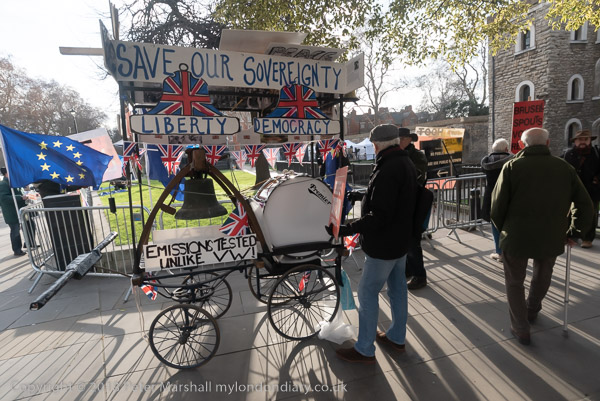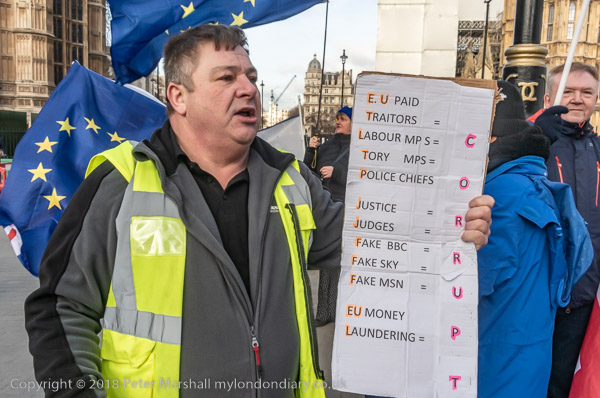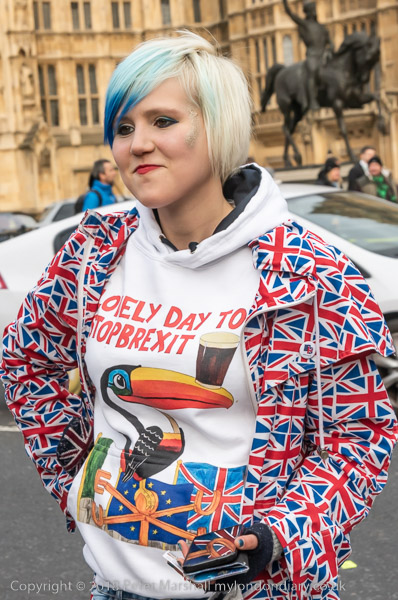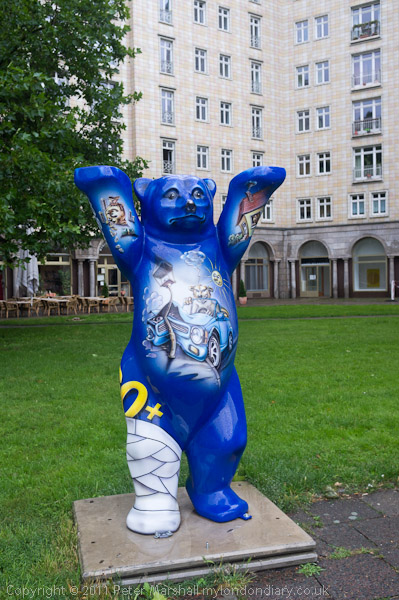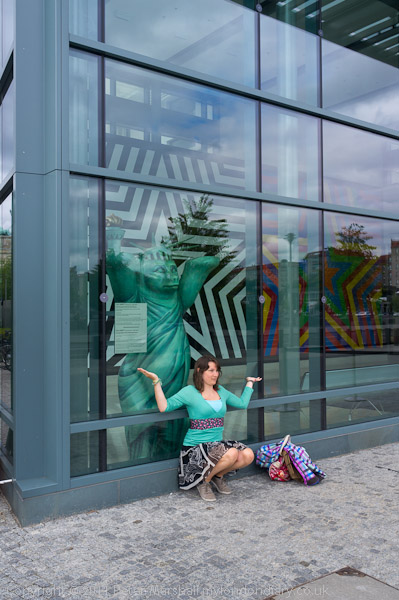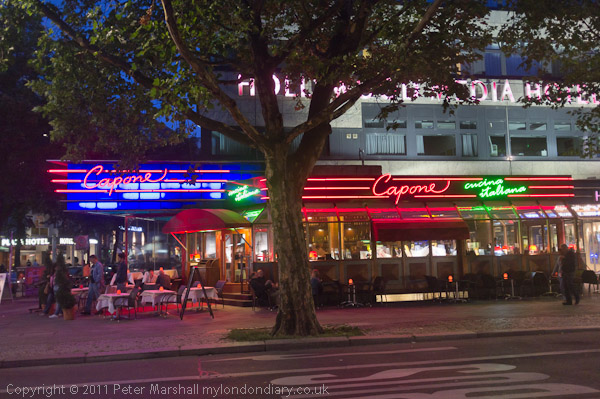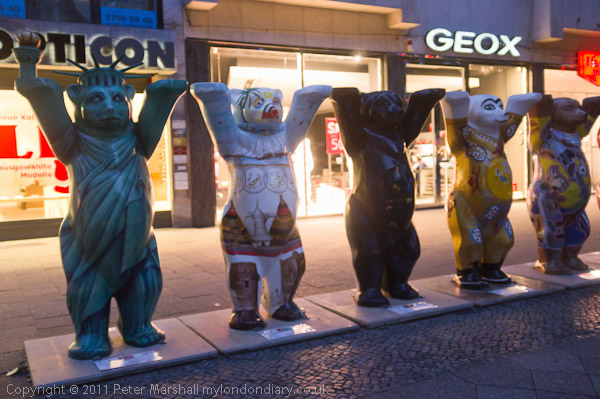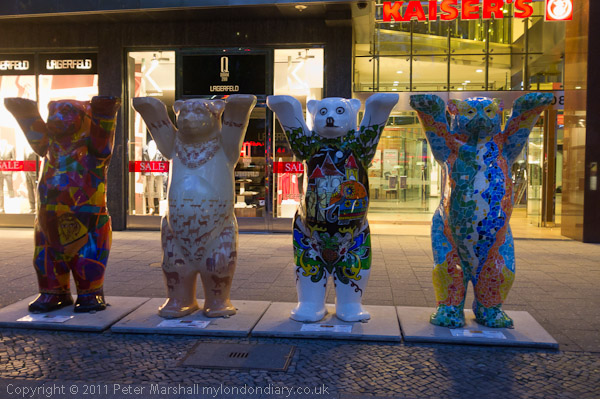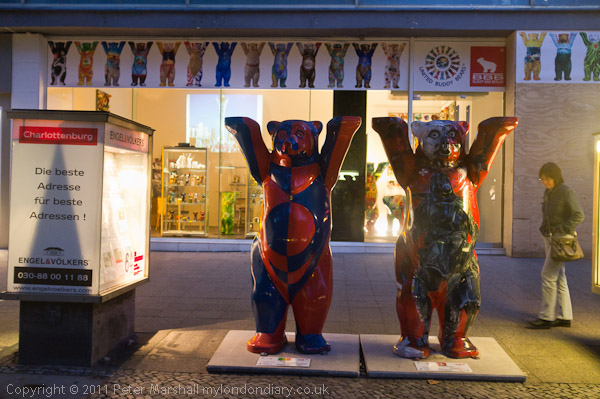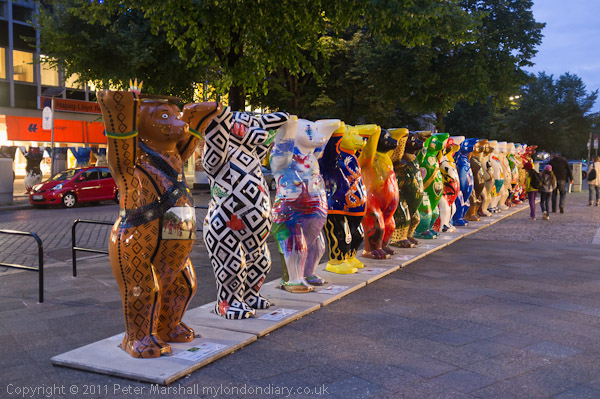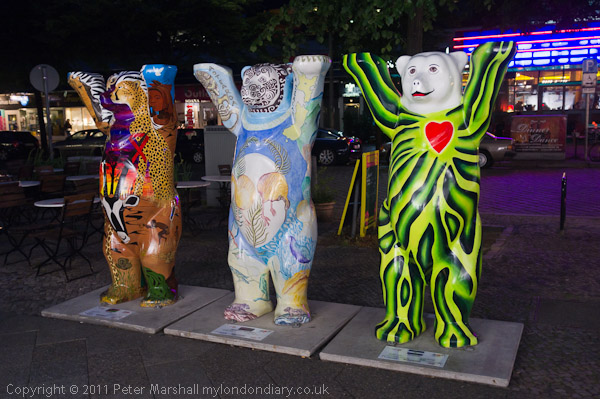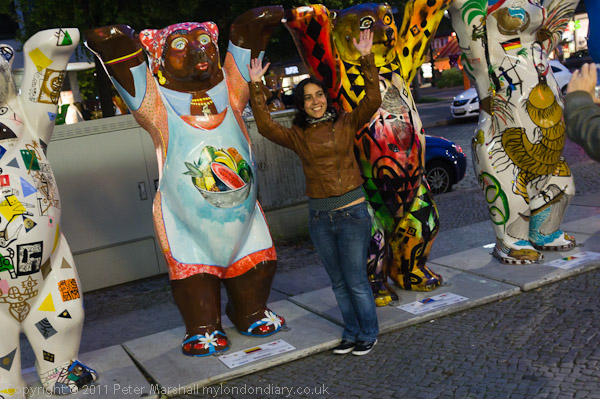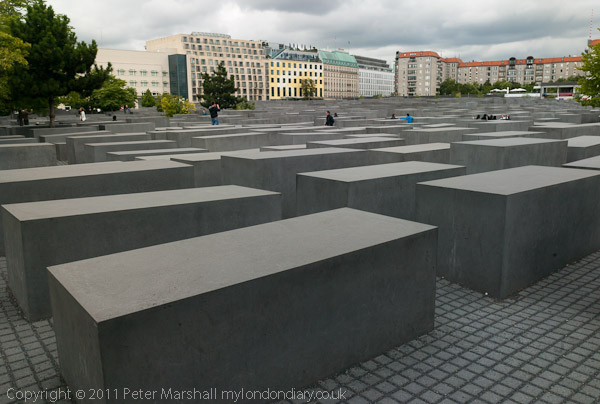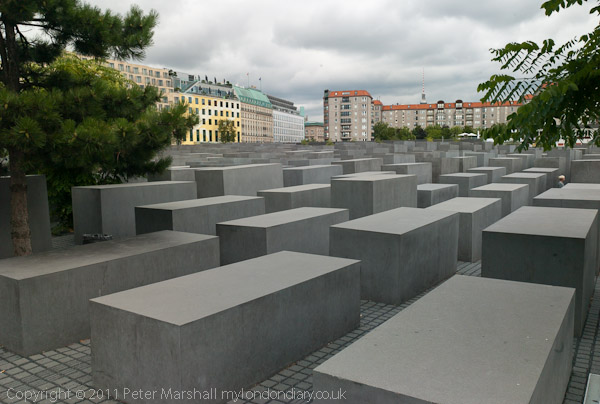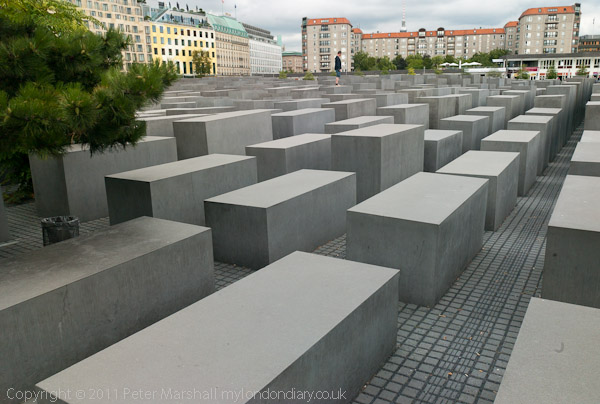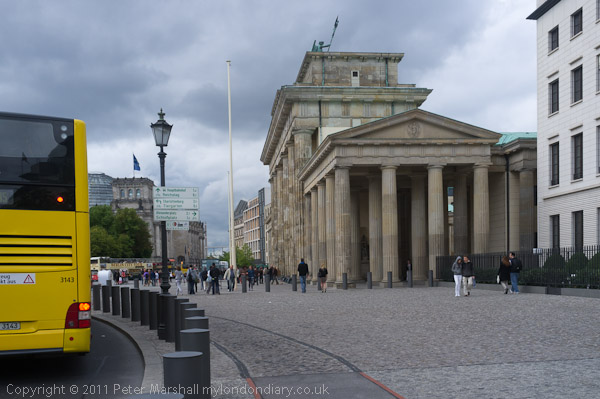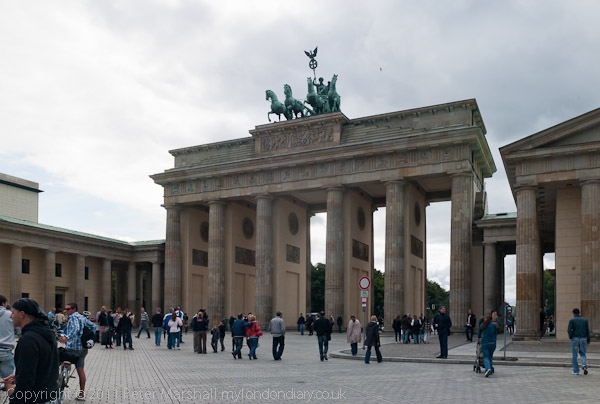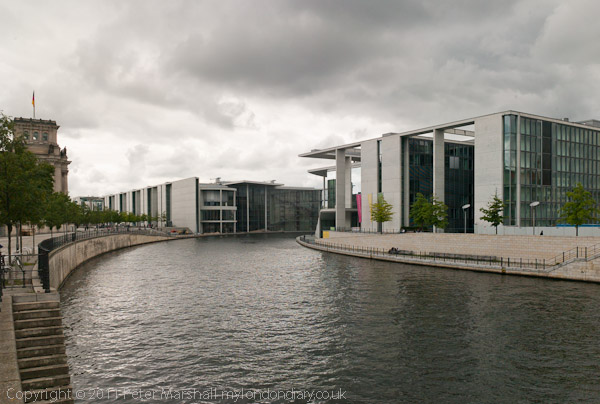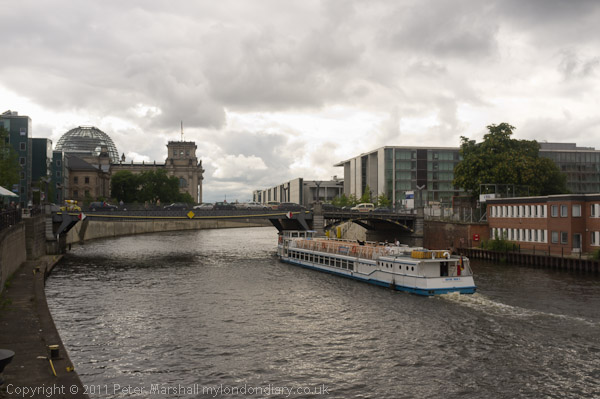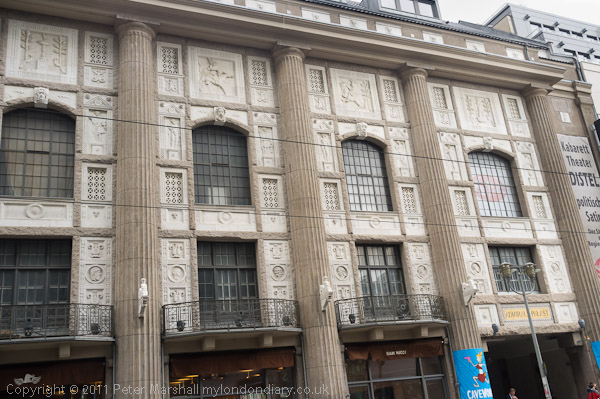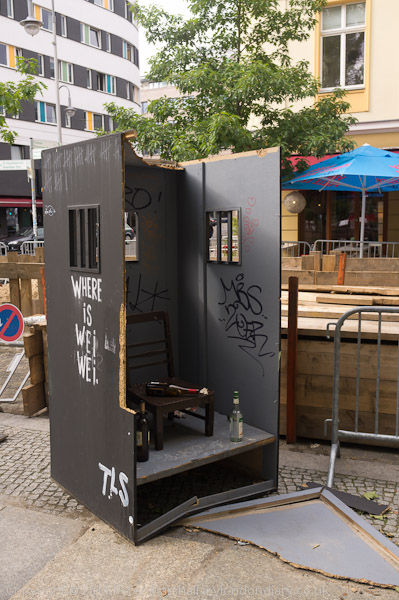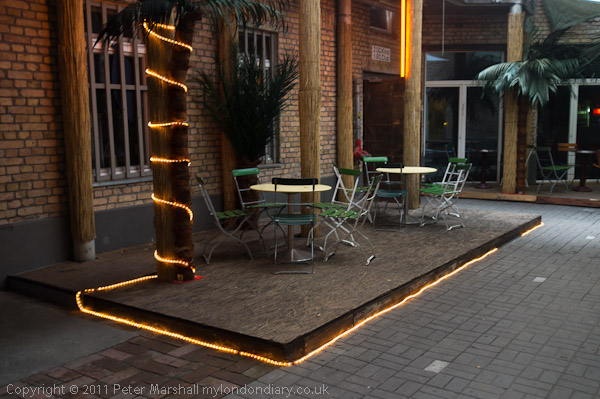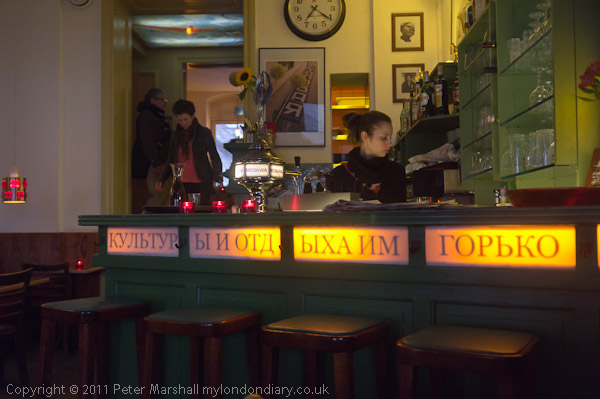Continuing the series of posts showing work taken in London in 1979 as posted to Facebook with comments an image at a time in the first half of 2018.
Previous post in London 1979 series
______________________________________________________
London Photographs 1979 – Peter Marshall
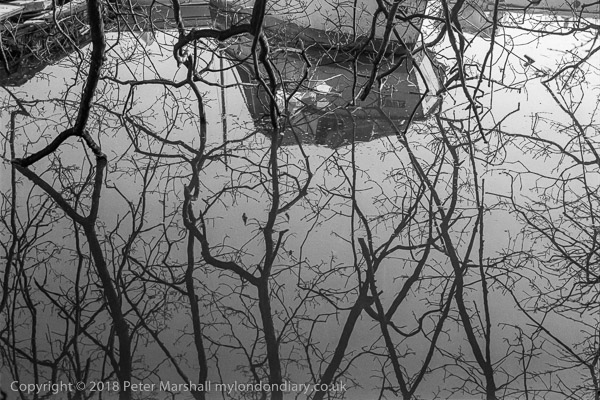
River Thames, Twickenham, Richmond, 1979
18s-54: richmond, river, trees, boat
Another picture from the same walk in Twickenham, with branches and their reflections combining to form a screen through which we appear to see the river and the moored boats at the top of the picture. Its an image which plays with space in a way that interested me, and which I still find difficult to resolve.
Hammerton’s ferry across the Thames to Ham still runs from a jetty not far from where I made this picture in Orleans Gardens.
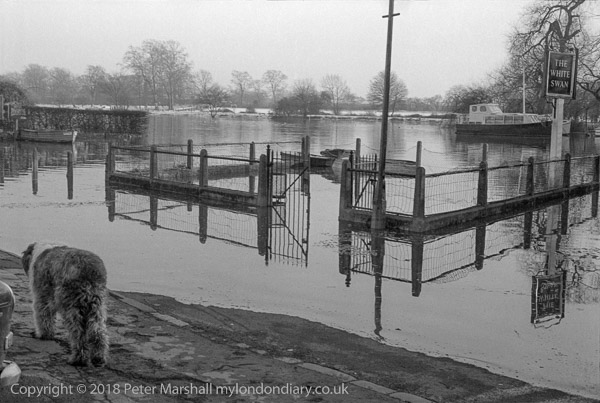
River Thames flooding at Twickenham, Richmond, 1979
18s-63: richmond, river thames, flood, pub, pub sign, White Swan, dog
Earlier on that same walk we had passed the beer garden of the White Swan, usually on the river bank but now a part of it, and this is another of the several pictures I took there, opposite the end of Eel Pie Island, where a boat is moored. Although I think much of the flood water was probably from melting snow, you can still see snow on the ground across on the other bank of the Thames.
The river here is still tidal, and flooding at high spring tides isn’t unusual. I took a number of frames here, of which I think this is probably the best.
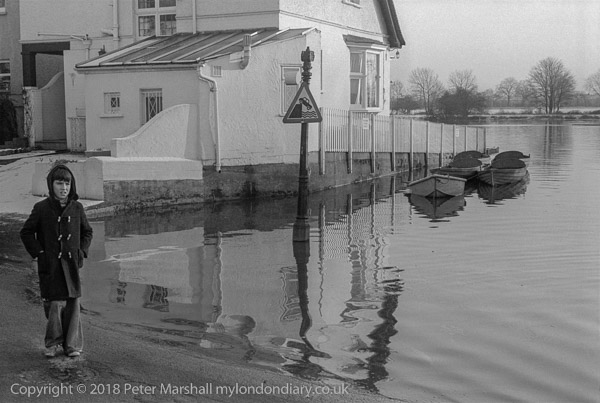
Twickenham Ferry, River Thames flooding at Twickenham, Richmond, 1979
18s-65: river thames, flooding, ferry, road sign, boy, boat
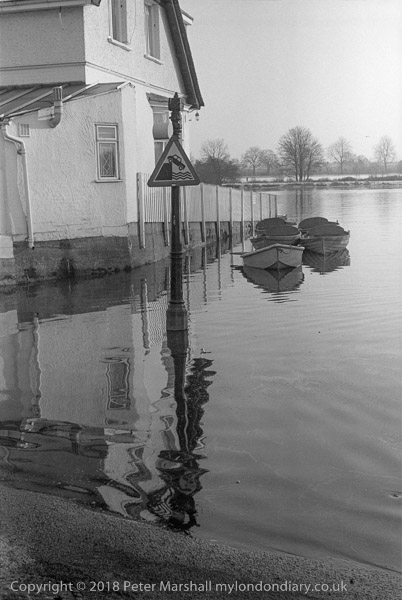
Twickenham Ferry, River Thames flooding at Twickenham, Richmond, 1979
18s-66: river thames, flooding, ferry, road sign, boat
There have been several ferries at Twickenham, the subject over the years of great rivalry and court cases. The oldest record is of Dysart’s Ferry, licensed by the family which owned Ham House, known to have been in existence in 1652 when it was prohibited from running after sunset by the Privy Council, but thought to be much older, dating from the reign of King John
The Dysart family managed to close down rivals which opened up until 1908, when the Earl of Dysart lost a court case against Hammertons ferry, in a case that went the whole way up to the House of Lords. Victory for the ‘The Ferry to Fairyland‘ was commemorated in song, one of a number written about Twickenham’s ferries. The rivals continued in operation until around 1970 when the old ferry, which had been sold to a private operator when the National Trust took over Ham House ceased operation, again at least in part over a long legal battle, this time over its use of the slipway. There was a long legal battle and the owners of the property at left put up the signs on their fence ‘This Slipway Is Private Property’. I don’t know what the outcome of the court cases was, though I think the public (and ferry) had used the slipway for many years, but of course the appropriation of the commons for private use has always been one of the basic aims of our legal system. The old Twickenham ferry was the one I went across as a child to visit Ham House, rowed I am fairly sure by the man who appears in a fine photograph on the Historic England site, and it ran from this slipway close to the White Swan.
Hammertons ferry, which runs from a jetty around a quarter mile downstream still operates during the summer and at winter weekends, and has an active Facebook page which includes interesting posts, pictures and videos about the river and the tides, which still trap many careless drivers parking in the area. This ferry is still a good way to visit Ham House though now a little closer to St Margarets than Twickenham station and with a few yards to walk on the opposite bank.
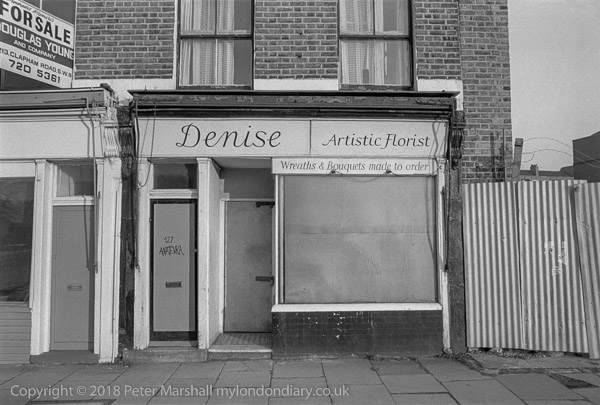
Denise Artistic Florist, Vauxhall, Lambeth 1979
18u-12: shop, florist,
I can’t place the exact location of ‘Denise Artistic Florist’, though the few frames immediately prior were taken inside an empty area on the Thames immediately east of Vauxhall Bridge. Four years later that site as bought by developer Regalian. Terry Farrell won a competition to develop it, and his architectural folly was bought by Margaret Thatcher as the HQ for the Secret Intelligence Service MI6. Apparently we only see half the building which has huge facilities underground – and possibly even a secret passage to Westminster.
It seems odd to have such a flamboyant front for our secret intelligence service, and I rather feel it would have been better to have kept something like Denise as a front, with our agents emerging carrying bunches of flowers.
But if anyone bought the Freehold Premises which were for sale from Douglas Young and Company, I suspect it was to knock them down and build something new.
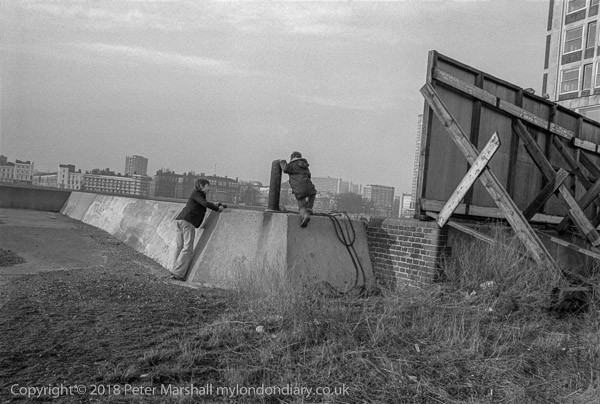
River wall, River Thames, Vauxhall, Lambeth 1979
18u-24: riverside
This was the derelict site next to Vauxhall Bridge now occupied by MI6, but then a playground for kids, and with some evidence of adult nocturnal activity scattered liberally around. At right is Camelford House, designed by TP Bennett and built in 1960 for the General Post Office’s Telecommunications regional head office. Both it and the neighbouring Tintagel House built at the same time for the Metropolitan Police are among the better examples of their time, though that isn’t saying a lot. Camelford House now houses a wide variety of organisations.
The concrete river wall was to the slipway which still exists and down which the London ‘Duck’ tours by amphibious vehicles enter and leave the river until the service was stopped to build the super-sewer project.

Closed shop awaiting demolition, Vauxhall, Lambeth 1979
18u-32: shop, demolition, Millett’s, newsagent,
Millett’s Newsagent & Tobacconist was at 111 Tyers St Vauxhall close to the Lambeth City Farm.
Kenneth Cecil Millett had owned a number of businesses, including the “Wash Me Clean” Launderette at 1, Jonothan Street, SE11 a newsagents at 11-13 Stratton Ground, SW1, and newagents and tobacconists like this also at 20 Vauxhall Street, SE11, 50 Trinity Road, SW17, 7 Wilcase Road, SW8, 342 Kennington Lane, SE11 and 44-46 Wood Street, Kingston-upon-Thames (also an off-licence) but in 1976 filed for receivership.
The shop on the corner of St Ostwald’s Place, has now been replaced by a modern 4-storey block of unusual design.
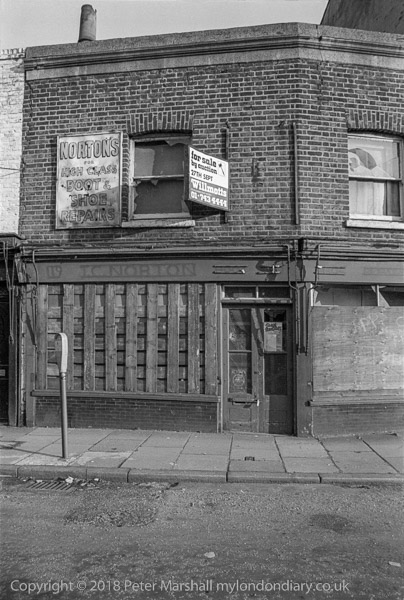
Closed shop awaiting auction, Vauxhall, Lambeth 1979
18u-33: shop, J C Norton, shoe repairs,
J C Norton’s for High Class Boot & Shoe Repairs was at 119-121 Tyers Place, close to the Vauxhall City Farm.
I don’t know how much the shop raised at auction, but rather to my surprise my original caption suggesting demoliton was over-pessimistic and the building is still there, though not too easy to recognise following extensive rebuilding and extension.
The building has different first floor windows, and extra story, and the ground floor frontage has changed, with the door in the different place. The house is at a slight bend in the street and retains the horizontal bands at the top of the wall above the first floor, with the second floor being set back behind this parapet.
More to follow shortly
Previous post in London 1979 series
______________________________________________________
The pictures in this series of posts are exactly those on London Photographs, where landscape format images display slightly larger. Clicking on any picture will go to the page with it on the web site.
I have included the file number and some keywords in the captions; you can order a print of any picture on this site using the file number.
Order details and prices
______________________________________________________
There are no adverts on this site and it receives no sponsorship, and I like to keep it that way. But it does take a considerable amount of my time and thought, and if you enjoy reading it, a small donation – perhaps the cost of a beer – would be appreciated.
My London Diary : London Photos : Hull : River Lea/Lee Valley : London’s Industrial Heritage
All photographs on this and my other sites, unless otherwise stated, are taken by and copyright of Peter Marshall, and are available for reproduction or can be bought as prints.
To order prints or reproduce images
________________________________________________________
